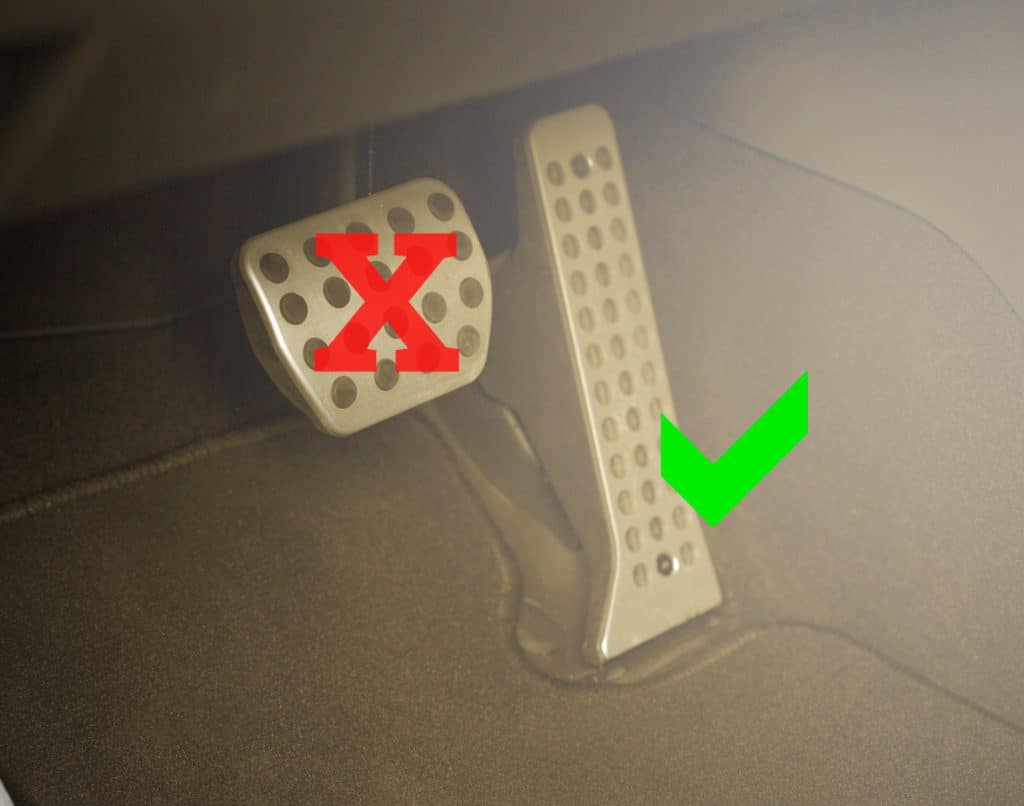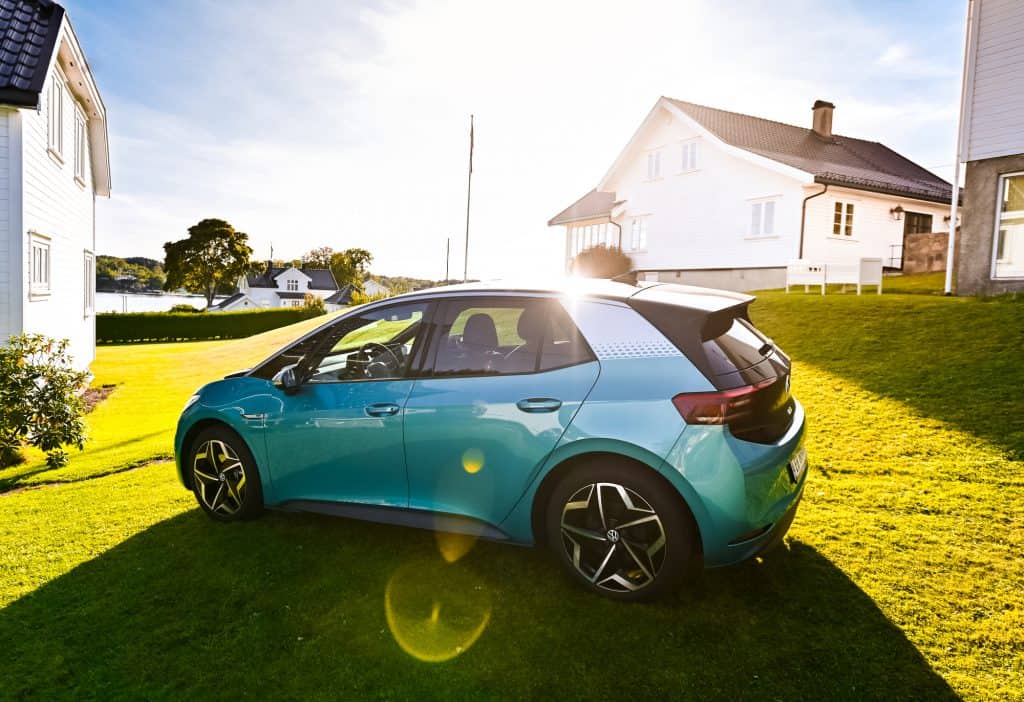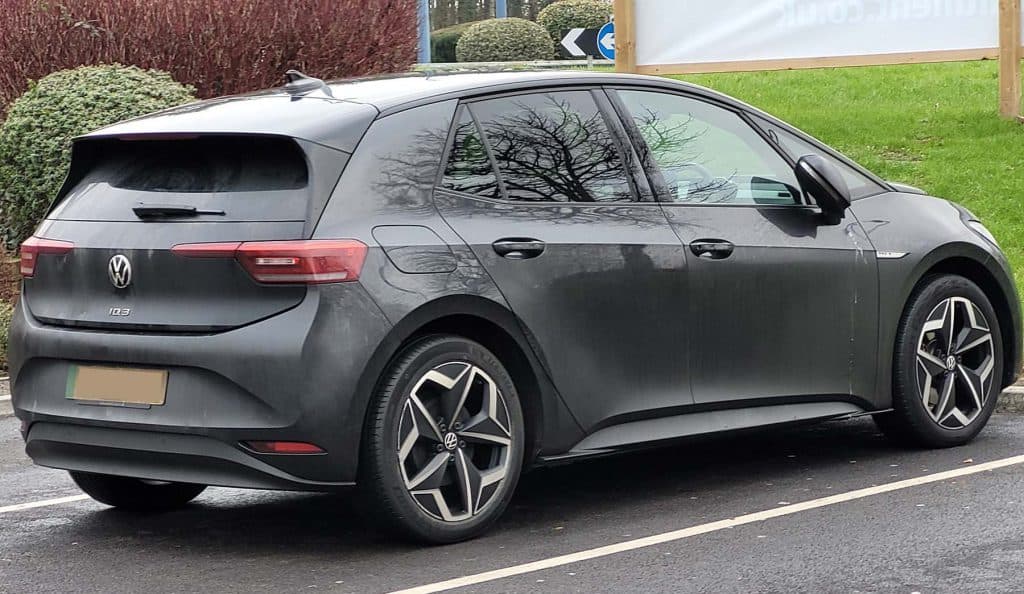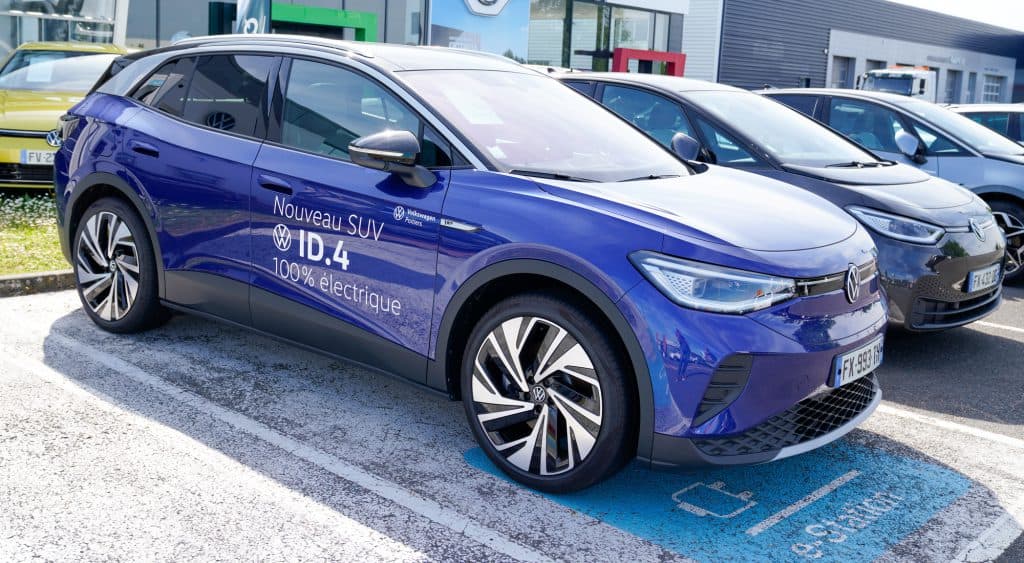One of the top technologies championed by EV users in recent years has been that of so-called “one-pedal driving.” Nissan was the first to make this into a mainstream technology with their e-pedal, and it has since been integrated in some form into just about every EV on the market. One OEM that has done things a bit differently, however, is Volkswagen.
Owners of the VW ID.3 and VW ID.4 quickly came to realize that these cars had a different “one pedal” approach when compared to the likes of Tesla or Nissan. In today’s blog, we’ll be taking a look at how VW’s technology is different from others in the field.
Background: What is One-Pedal Driving Technology?

The idea of one-pedal driving is born out of the sheer tedious nature of city driving, and especially driving in heavy traffic. In a regular car, one almost feels like they are performing a slowed-down version of Riverdance upon their pedals, especially those with a manual transmission.
The constant cycle of stopping and starting made driving even half a mile down the street utterly exhausting.
One-pedal driving is a feature commonly included in electric vehicles that allows users to simply press down on the accelerator pedal when they want to move forward, and then release the accelerator when they want to slow down and stop.
It is the new and preferred method of activating an EV’s regenerative braking system. Once the pedal is released, the EV regenerative braking would kick in and slow the car down to a complete stop within a safe distance of any obstacle in front.
Regenerative braking has become an inseparable part of the one-pedal driving system. The action of taking one’s foot off the accelerator pedal results in the electric supplied to the electric motor to be reversed, essentially turning the motor mechanism into an electric generator in that time, sending power back to the lithium-ion battery.
The advent of this technology made the experience of driving in traffic a lot more bearable, but also allowed the driver to use it in other situations too, as releasing the accelerator pedal became the standard way of activating the regenerative braking and slowing the car down.
The battery received additional energy, and the hydraulic brake pedal suddenly got used less and thus now can last longer.
The Approach of Most OEMS
Most OEMs that use this technology such as Tesla, Nissan, Kia and others feature some sort of adjustable setting — though Tesla controversially removed adjustability in 2021 — that allows the user to control the strength of the one-pedal drive function and regenerative braking.
The stronger the settings, the stronger the braking effect on the vehicle would be, thus removing its ability to coast along.
Those who preferred a mixture of coasting would keep one-pedal settings low, allowing for more coasting and minimal slowdown. Others would dial up the effect to ensure that when driving in traffic, for instance, the regenerative braking would always bring the vehicle to a complete stop.
While one’s foot is off the pedal, the car is being slowed down and power is being redirected to the lithium-ion battery. The overall strength of the effect does vary from vehicle to vehicle, but they all work in basically the same way, except for Volkswagen’s more unique approach.
The Volkswagen “One Pedal” Difference

So how is the system that you find in Volkswagen EVs like the ID.3 and ID.4 different? Firstly, we should make it clear that VW does offer both a variant of one-pedal driving and regenerative braking, but it is certainly arranged differently to others.
Rather than adjusting the strength of the regenerative braking effect as you do with many vehicles, the VW ID EVs use two different drive modes, namely Braking (B) and Driving (D) modes.
We’ll explain these in more detail a bit further below, but in short:
- When you have the car set to D, there’s often no automatic regenerative braking effect until you apply the hydraulic brake. The EV instead ‘coasts’ along when you take your foot off the accelerator.
- When you have the car set to B, there is an automatic regen braking effect. Simply releasing your foot off the accelerator will start to slow down (brake) the car.
One of the reasons VW opted for this route is apparently because they’re aware that the ID.3 and ID.4 are cars that for many owners represent their very first foray into the world of EV driving.
Therefore, they wanted to give these drivers more choice and flexibility in how they manage these features. They’d be able to use their VW ID vehicle in the way that they’re more used to most of the time, but switch over to B mode to practice their new mode whenever they could.
“B” and “D” Modes Explained

Most ID.3 and ID.4 drivers have come to make use of these different driving modes in different environments, and it’s this distinction that perhaps helps to explain why VW took this technology in a different direction. What most drivers do is make use of B mode when they’re driving in the city, and D mode when they’re driving on the highway.
When in B mode, the regenerative braking action is automatic and instant. The ID.3 and ID.4 models already have other automatic slowing and driver warning technology to prompt drivers into action if and when it senses that application of the brakes is needed. It has to be said, however, that VW’s regen braking action, even when in B mode, is nowhere near as aggressive as the likes of Tesla and Nissan, which actively work to bring the car to a complete stop.
When in D mode, there is no automatic braking action when one releases the accelerator. Drivers have reported that after building up speed, the coasting action lasts for a long time on the VW ID.3 and ID.4, with some even saying it feels as though there’s another person driving the car:
On an empty road, regenerative braking will therefore only kick in as and when the driver applies the brake pedal. As we mentioned before, however, the ID models do have various technologies that actively slows the vehicle if there are speed limit changes, obstacles or intersections ahead.
Therefore whilst it’s usually the case that ‘D’ mode feels like driving a gasoline car (since releasing the accelerator results in coasting, not braking), you can and will still experience some automatic braking – and hence regenerative action – in this mode.
It is perhaps because of this existing technology that VW felt it unnecessary to use the same style of regen braking and one-pedal driving that others are using.
Expected Changes?
There is some discussion online about whether or not VW will modify these features by updating algorithms via over-the-air updates. We know that such things can be done, with Tesla having made changes to the effectiveness of their brakes with OTA updates. Whether or not this change will really be made depends on how many people see this kind of system from VW as a mistake, or simply as an alternative to what’s already out there.
If you read the online forums regarding this specific feature of the ID.3 and ID.4, it’s more of a mixed bag than you might expect. Far from the vast majority being annoyed that they have to get used to a new system having driven a different EV for years before the ID.4, they are actually adapting to that new system well, and even finding advantage in it.
We did mention in the previous section that many ID drivers like to use D mode when traveling a longer distance and using the highways, but B mode when they’re driving around town. That makes sense, and what’s more they can still get the regen braking when in D mode simply by applying the brakes as they ordinarily would.
The question then is whether VW will backtrack from this style of offering, or stick with it, possibly adding in more choice for drivers as the years go on, sales increase and the range of ID vehicles grows ever larger.
Conclusion: Have VW Made a Mistake?

The fact that VW have persisted in using the B and D mode style of regenerative braking and one-pedal driving system suggests that VW’s own data doesn’t reveal any mistake on their part. It would be uncharacteristic of a company like VW not to adapt or change course if something were going wrong.
However, while there is some logic to their wanting to help new EV drivers settle into their new style of driving, it’s also true that many ID drivers are not first-time users, and find the lack of automatic (and strong) regenerative braking a frustration.
For existing EV drivers, it’s a bit like going back to EV school. There’s a risk, then, that some more experienced EV owners will shun the VW ID system in favor of something they know better. In truth, only time will tell.
17 comments
We got an ID.4 a month ago, and the big problem with VW’s implementation of “one pedal driving” is that the car does not fully stop, even in “B” mode. Even if the car is fully stopped (foot on brake) and one removes all feet from the pedals, it creeps forward. There is no setting to make it fully stop; it will always creep. As a Tesla driver used to true one-pedal driving, this not only drives me crazy, but I think it’s unsafe. On almost every drive I have a close call of nearly rear-ending someone at a stoplight since I’m so used to the car being stopped when my feet are off the pedals. I really hope they implement an option to fully stop the car when the foot is off the gas in a software update.
Thanks for sharing your experience Kevin, I love the ID.4 but I agree that their one-pedal driving implementation is frustrating. I totally agree that it doesn’t feel safe anymore, after driving a Tesla. Tesla’s implementation is just so nice, and natural.
Hi Kevin W,
I have used a id 3 for a year. I think the breaks can be set to creep or hold. If set to hold once car comes to halt breaks stays on till you press on throttle pedal. If in creep it behaves as you discribe I think! Hopefully that would solve your issue.
regards Chris
If you have applied the brake at the stoplight, if you depress the brake pedal a bit more, “Auto Hold” will light up on the speedometer display. At that point, it is as if you’ve set the parking brake except that it will immediately release the next time you step on the accelerator. The car does not creep in Auto Hold mode.
Can we please quit perpetuating this myth that regenerative braking causes the motor to spin backwards? The motor continues to spin the same direction. Only the flow of electricity is reversed. Suddenly reversing the motor would require really unusual gearing, would put a ton of stress on the driveline, and would be a very jarring experience for the passengers, especially at highway speeds.
You’re right, bad wording on our part. Thanks for the comment Pete, that’s been tweaked now.
I drive a 2017 Chevy Bolt. It has a similar one pedal driving system only they use the letters “D” and “L”. I suppose the letter “L” comes from one pedaL driving. In addition, there is a button on the back of the steering wheel that will increase the regen intensity while it is pressed. Regen intensity is controlled by the position of the accellerator pedal; easing back on the pedal slightly provides light regen with regen increasing as the pedal is further released. Releasing the pedal entirely will bring the car to a complete stop. I often go for weeks without using the brake pedal to slow or stop forward progress.
Chevy implemented this system in my Bolt that was produced in December of 2016. This was long before either Tesla or Nissan provided a one pedal driving system.
I have dreams of buying an electric VW Minibus (id.buzz), but will not unless they implement a one pedal driving system that can bring the vehicle to a complete stop.
Ah yes, I’ve heard good things of the Bolt’s one-pedal driving approach – being able to bring the car to a complete stop should be seen as an essential in an EV, in my opinion.
Several times in this article the false claim is made that in ID cars in D mode “regenerative braking will only kick in as and when the driver applies the brake pedal.” I wonder if they author has ever driven an ID car in D mode.
If he had, he would know that in D mode (if the car is set to Eco or Comfort driving settings), the car will automatically apply regen when it senses that the car in front is too close for the current speed, when there is an upcoming change in speed limits, when the car is approaching an intersection and in lots of other circumstances. It does this without the driver having to apply the brake pedal at all. It all feels quite effortless and not obtrusive. It is very well thought-out and assists the driver without taking over from the driver. The author alludes to this only briefly saying “however, the ID models do have safety technology that actively slows the vehicle if there are obstacles or intersections ahead and the driver appears to be taking no action at the appropriate time” as if this is something that only intervenes during perceived emergencies. That is not the case: it is arguably the defining feature of D mode (VW calls it “front assist”) on these cars and it is very frequently at work in D mode, with or without adaptive cruise control engaged.
D mode on the ID cars is an evolution from one-pedal driving that is more efficient in almost all circumstances. In fact, as an ID.3 owner, I can’t think of a plausible use-case for B mode, which is one-pedal driving minus the capability to bring the car to a complete stop. I believe that D mode is more efficient for two reasons: 1) unlike B mode it allows the car to coast when you take your foot off the accelerator. In an electric car, forward momentum is extremely valuable and energy efficient. You don’t want to scrub it off unnecessarily. Coasting is essentially moving forward without expending energy or slowing the car down by recuperating energy. In B mode, there is effectively no way to coast. You could try to hunt out the sweet spot between using energy and recovering energy but that sweet spot is minuscule if it exists at all and will be constantly changing with road and situational conditions. Whereas in D, coasting is trivially easy. 2) in D mode the driver need not always be highly attuned, as he/she must in B mode, to what’s coming up on the road (changes in layout, etc.). The car takes care of when to apply regen. Additional regen will be applied whenever the driver steps on the brake.
If you want to get a sense of how D mode works in the practice and why it’s better than B mode on the ID cars (and better than one-pedal driving on most other EVs), this video is pretty good: https://www.youtube.com/watch?v=a9w22O0Rvgk
I made one error in my post: the relevant feature is called “Eco Assistance” in D mode. “Front Assist” is the emergency automatic braking system (if you’re about to hit a pedestrian, for example).
Thanks for the ultra detailed comment, it’s definitely appreciated. I have only driven briefly in D mode, so your further clarification is really helpful.
I know of a few people who seem to much prefer B mode, so it’s interesting to hear your opinion. I guess that it’s ultimately nice that VW have two fairly different feeling options, and then give the driver the choice.
I’ve been driving an e-Golf for 5 years and I drive in D mode over 90% of the time. If I had to give up ones mode it would be B mode . I really don’t like one pedal driving and much prefer D mode for all the reasons outlined by Bupkis. I drive mostly in the country on rural roads and relatively little in town.
I was looking forward to the ID4, but after the test drive I recognized as an EV driver it was not a viable option for me. I almost had an accident resulting from unexpected creep at a stop light. It surprised me that there was no “EV” mode available.
Its also a bit misleading, you see its true that the ID3 has D mode and B mode. A nissan leaf has D mode and B mode as well, but a nissan leaf also has E-pedal. Bmode and E-pedal are not the same thing, that is why the leaf has BOTH.
I had a accident in B mode foot slip off the pedal and wet shoes and the car went flying into a parked truck back in. ID front in destroyed not so to the truck it lurched over a curb and had a hugh back end bumper, minor damage. I think my wet shoe may have hit the accelerator but not sure. Please email if this has happened to anyone else? incadewey@gmail.com Thxs David Lewis
The absence of one pedal driving on the id.4 2024 is the reason I would not buy this car.